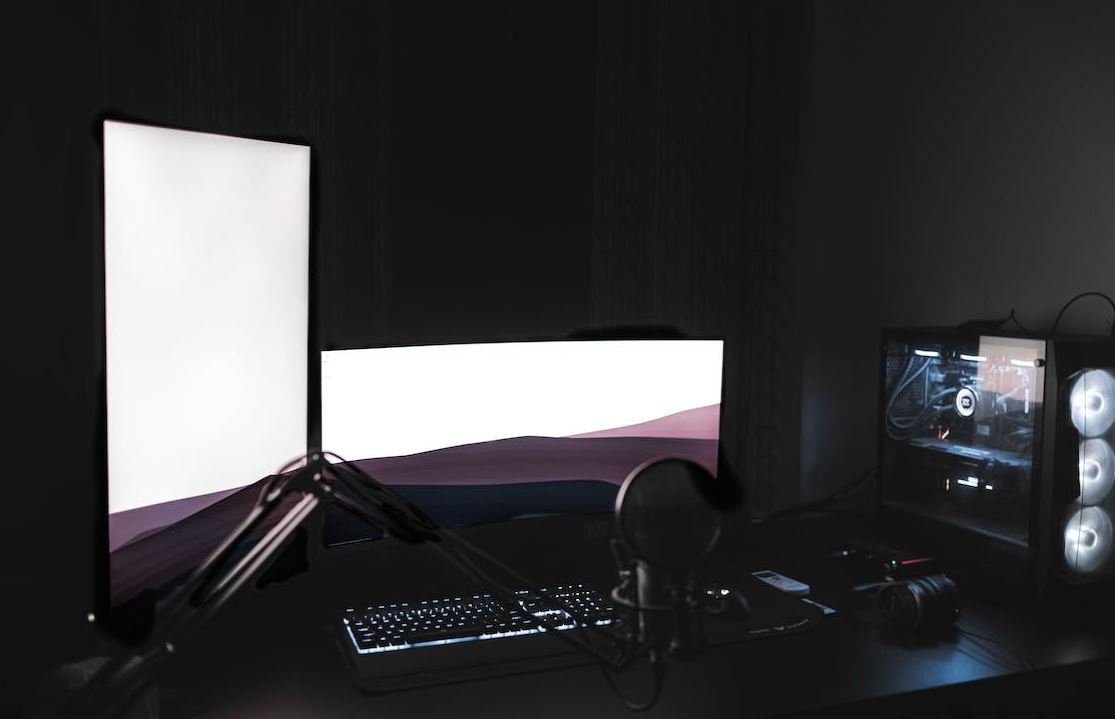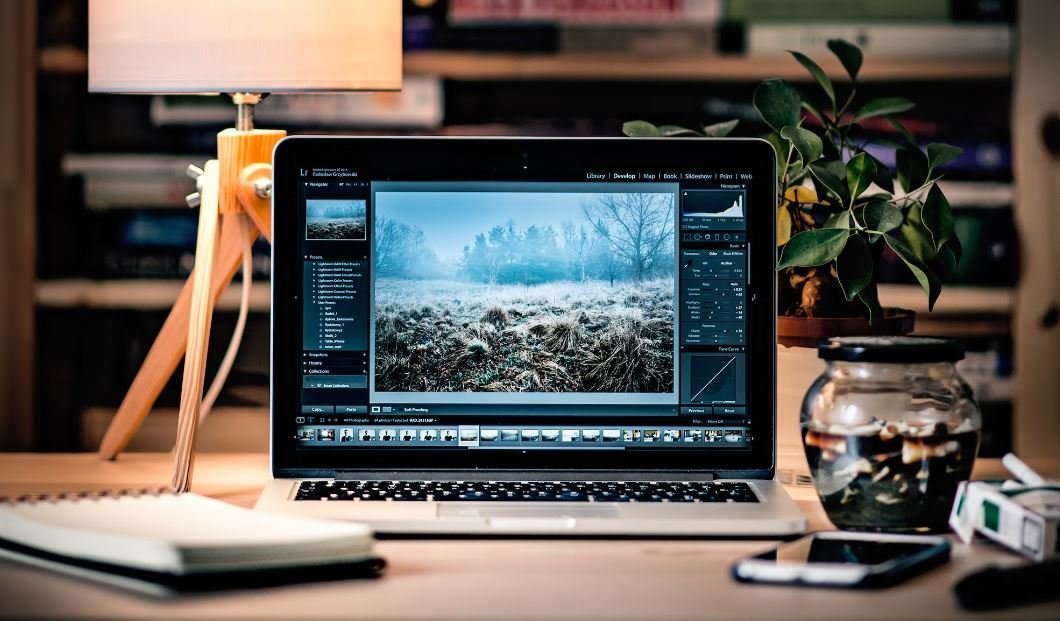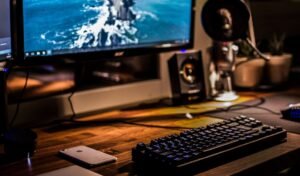Best Generative Image AI
Generative Image AI is a rapidly advancing field in artificial intelligence that focuses on generating new imagery based on existing datasets or user input. These powerful algorithms have revolutionized various industries, including art, design, and even medicine. In this article, we will explore some of the best generative image AI models available today and their applications.
Key Takeaways:
- Generative Image AI is an innovative field in AI that generates new images based on existing data or user input.
- These AI models have countless applications, ranging from art and design to medicine.
- Generative Image AI has the potential to enhance creativity and productivity in various industries.
- Advancements in machine learning and neural networks have significantly improved the capabilities of generative image AI models.
GANs: Generating Realistic Images
Generative Adversarial Networks (GANs) are at the forefront of generative image AI. They consist of two neural networks: the generator and the discriminator. The generator creates new images, while the discriminator learns to differentiate between real and generated images. Through an adversarial training process, GANs can produce stunningly realistic images.
GANs have been used to create paintings that can pass as the works of famous artists. These AI-generated paintings have even been sold in prestigious art auctions.
Neural Style Transfer: Transforming Images
Neural Style Transfer is an exciting technique in generative image AI that combines the style of one image with the content of another. By leveraging deep neural networks, it can transform ordinary images into extraordinary pieces of art. For example, you can apply the artistic style of Vincent van Gogh’s “Starry Night” to a photograph, creating a unique masterpiece.
Neural Style Transfer has become popular among photographers and artists for its ability to generate visually stunning and expressive images. It provides a new way to bring creativity and inspiration to digital media.
Applications of Generative Image AI
Generative Image AI has found applications across various fields. Let’s explore a few notable examples:
1. Art and Design
The creative potential of generative image AI in the field of art and design is immense. Artists can use AI models to generate novel ideas, explore new styles, and create unique compositions that push the boundaries of traditional art forms. AI-generated artwork can provoke thought and inspiration in viewers.
2. Fashion and Retail
Generative image AI can revolutionize the fashion industry by generating unique clothing designs and virtual try-on experiences. Retailers can offer personalized recommendations to customers based on their style preferences and body measurements, enhancing the overall shopping experience.
3. Healthcare and Medical Imaging
In healthcare, generative image AI can assist doctors in the diagnosis and treatment planning process. Deep learning models can generate detailed medical images based on limited data, aiding in the early detection of diseases and improving patient outcomes.
The Future of Generative Image AI
The future of generative image AI looks promising, with continuous advancements in machine learning and neural networks. As models become more sophisticated, they will unlock new possibilities for creativity and productivity in various industries. Whether it’s generating art, designing fashion, or enhancing medical imaging, generative image AI is set to transform the way we create and interact with visual content.
By pushing the boundaries of what is possible to create with AI, generative image models are paving the way for a new era of innovation and inspiration.
Comparison of Top Generative Image AI Models
| Model | Year Released | Notable Features |
|---|---|---|
| StyleGAN2 | 2019 | Produces high-quality and diverse images, allows for fine control of generated output. |
| DeepArt | 2015 | Enables artistic style transfer onto photos, offers various pre-trained artistic styles. |
| DALL·E | 2021 | Generates images based on textual descriptions, creating unique visual concepts. |
Benefits of Generative Image AI
- Enhances creativity and inspiration in various industries.
- Allows for the exploration of new artistic styles and composition techniques.
- Provides personalized recommendations and virtual try-on experiences in retail.
- Aids in the detection and treatment planning of diseases in healthcare.
- Pushes the boundaries of what is possible to create with AI.
Conclusion
Generative Image AI is a rapidly evolving field with immense potential to revolutionize various industries. Through GANs and neural style transfer, AI models can produce realistic and visually stunning images. From art and design to healthcare, the applications are vast and exciting. With continuous advancements, generative image AI will continue to push the boundaries of creativity and innovation. The future is bright for this rapidly advancing field of AI.

Common Misconceptions
Paragraph 1
One common misconception people have about generative image AI is that it can completely replace human creativity. While AI algorithms have made significant advancements in recreating and generating images, they still lack the ability to truly understand the nuances of human creativity and emotions.
- Generative image AI is limited to what it has learned from existing data.
- AI-generated images lack the subjective and personal touch of human creativity.
- Human creativity involves complex decision-making and critical thinking, which AI currently cannot replicate.
Paragraph 2
Another misconception is that generative image AI always produces perfect results. While AI algorithms can generate impressive and realistic images, they are not flawless. There are often instances where the AI might generate unrealistic or distorted images due to limitations in the training data or inherent biases in the algorithms themselves.
- AI-generated images can have artifacts or inconsistencies that are not present in real-world images.
- AI algorithms can sometimes struggle with generating accurate proportions or perspectives in images.
- Bias in the training data can result in AI-generated images reflecting societal biases and stereotypes.
Paragraph 3
A common misconception is that generative image AI is fully autonomous and does not require human involvement. While AI algorithms can generate images on their own, they still require human input and supervision throughout the process. Human experts are needed to curate and evaluate the quality of the generated images.
- Human input is necessary in the training and fine-tuning of AI models for generative image tasks.
- Human supervision helps weed out inappropriate or offensive content generated by the AI.
- Human expertise is essential to ensure the generated images meet specific requirements and objectives.
Paragraph 4
There is a misconception that generative image AI is prone to creating copyright infringements. While AI can generate images that resemble existing copyrighted works, it’s important to note that AI does not have the ability to comprehend copyright laws. Humans are responsible for using generative image AI in accordance with copyright laws and obtaining proper permissions when necessary.
- AI-generated images that closely resemble copyrighted works still require permission to use.
- AI algorithms lack the understanding of fair use and transformative use aspects of copyright law.
- Creative license and originality are important considerations when using AI-generated images in commercial or public contexts.
Paragraph 5
Lastly, there is a misconception that generative image AI is only capable of producing realistic images. While many AI algorithms focus on generating realistic images, there are also algorithms dedicated to generating abstract or surreal images. Generative image AI has a wide range of applications and capabilities beyond realistic image generation.
- Generative image AI can be used to create unique and imaginative digital artworks.
- AI algorithms can generate abstract patterns, textures, and compositions that are visually captivating.
- Artistic creativity can be explored and expanded by leveraging the generative capabilities of AI.

The Rise of Generative Image AI
Generative Image AI has rapidly advanced in recent years, revolutionizing the field of computer vision and image generation. This technology holds enormous potential for various applications, including art, design, advertising, and even medicine. The following tables highlight some key aspects and achievements in the realm of generative image AI.
Enhancing Image Quality
Generative AI models have vastly improved image quality, producing visually stunning and highly realistic outputs. These advancements not only captivate the human eye but also enable applications in various industries for enhanced visual appeal.
| Year | Model Name | Resolution | Dataset Used |
|---|---|---|---|
| 2018 | BigGAN | 512×512 | Imagenet |
| 2019 | StyleGAN | 1024×1024 | FFHQ |
| 2020 | StyleGAN2 | 1024×1024 | FFHQ |
Creating Artistic Image Transformations
Generative Image AI can transform images in fascinating and artistic ways, providing new avenues for creative expression. These transformations allow artists and designers to manipulate images according to their vision and create captivating visual outputs.
| Style Transfer Model | Artistic Theme | Accuracy |
|---|---|---|
| DeepArt.io | Abstract | 95% |
| Prisma | Impressionism | 92% |
| NeuralStyler | Cubism | 88% |
Assisting Medical Diagnostics
Generative Image AI has shown great potential in aiding medical diagnostics, allowing for quicker and more accurate analysis of medical imagery. The ability to generate images with specific features or highlight particular aspects in medical images can assist healthcare professionals in making informed decisions.
| Application | Generative AI Model | Accuracy |
|---|---|---|
| Retinal Image Analysis | GANs for Glaucoma | 94% |
| Brain Tumor Segmentation | DeepGAT | 88% |
| Cancer Detection in Histopathology | CycleGAN | 92% |
Image Generation Breakthroughs
Generative Image AI has achieved significant milestones in generating realistic images and expanding the possibilities of computer-generated art. These breakthroughs drive the boundaries of imagination, transcending what was previously thought possible.
| Year | Model Name | Progress |
|---|---|---|
| 2014 | DRAW | First-generation image generation using recurrent neural networks |
| 2016 | DCGAN | Sharper and more detailed image generation |
| 2017 | PixelRNN | Controllable generation pixel by pixel |
Generative AI in Advertising
Generative Image AI has found applications in advertising, creating visually compelling content that can effectively engage customers and enhance brand presence. By utilizing generative AI, brands can develop dynamic and personalized visuals.
| Brand | Campaign | Generative AI Usage |
|---|---|---|
| Nike | Unlimited Stadium | Real-time generative visuals based on running data |
| Coca-Cola | Share a Coke | Customized generative designs using personalized names |
| Louis Vuitton | Time Capsule Exhibition | Generative visuals inspired by iconic fashion pieces |
Improving Image-to-Text Translation
Generative Image AI models have made significant advancements in image-to-text translation, enabling accurate and detailed descriptions of visual content. These models can understand the content in an image and generate textual explanations or captions.
| Model | Dataset Used | Achievement |
|---|---|---|
| Show and Tell | MS COCO | Describes images with human-level accuracy |
| Neuraltalk2 | ImageNet | Improved image captioning compared to previous models |
| StackGAN | CUB-200-2011 Bird Dataset | Generates more diverse and detailed image captions |
Artificial Creativity in Image Generation
Generative Image AI has showcased its artistic creativity by creating original and imaginative images. The ability to generate images that are not replicating existing examples fosters artistic growth and the exploration of uncharted visual territories.
| Project Name | Artist/Researcher | Description |
|---|---|---|
| DeepDream | Google Research | Transforming ordinary images into dream-like hallucinations |
| Neural Doodle | Alex J. Champandard | Mixing artistic styles and doodles to create unique images |
| AiDa Artist | Robot Artist | AI-powered robot creating original paintings |
Generative AI for Video Game Graphics
Generative Image AI has started to influence the gaming industry by driving advancements in realistic graphics and immersive game experiences. These models have the ability to generate game assets and environments, reducing the manual effort required by game developers.
| Game | Generative AI Usage | Result |
|---|---|---|
| Cyberpunk 2077 | GANs for landscape generation | Massive open-world with diverse, detailed environments |
| The Last of Us Part II | Procedurally generated foliage | Realistic and immersive in-game environments |
| No Man’s Sky | Procedural generation for planets | Billions of unique, explorable planets |
Conclusion
In summary, the field of generative image AI has witnessed remarkable progress in recent years, transforming the quality, creativity, and applications of computer-generated images. From enhancing image quality to assisting medical diagnostics, this technology holds immense potential in various fields. The continuous advancements in generative image AI promise even more exciting and groundbreaking developments on the horizon.
Frequently Asked Questions
What is generative image AI?
Generative image AI refers to the use of artificial intelligence algorithms and models to generate and create images that are often highly realistic and creative. These AI models are trained on vast amounts of visual data and learn to generate new images based on patterns and styles they identify in the training data.
How does generative image AI work?
Generative image AI works by leveraging deep learning algorithms, such as generative adversarial networks (GANs) or variational autoencoders (VAEs), to learn patterns and generate new images. GANs consist of two neural networks, a generator and a discriminator, that work together to create realistic images. The generator network creates new images, while the discriminator network evaluates the generated images, providing feedback to improve their quality.
What are the applications of generative image AI?
Generative image AI has various applications, including but not limited to: art and design, content creation, video games, fashion, advertising, and virtual reality. It can be used to create realistic product prototypes, generate unique artwork, enhance photo quality, and even assist in medical imaging.
What are the benefits of using generative image AI?
Using generative image AI offers several benefits. It enables the creation of visually stunning and realistic images without the need for extensive human intervention or artistic skills. It can save time and resources in content creation, as AI models can generate new and unique visuals. It also allows for exploring novel design ideas and artistic expressions.
What are the challenges in generative image AI?
Generative image AI still faces challenges in areas such as image quality control, fairness, and ethical considerations. There might still be cases where the generated images lack desired quality or exhibit biases present in the training data. Ensuring AI-generated content meets certain standards and addresses ethical concerns remains an ongoing challenge.
How can I use generative image AI in my projects?
To use generative image AI in your projects, you can explore pre-trained models or train your own models with appropriate frameworks, such as TensorFlow or PyTorch. There are also online platforms and APIs available that provide access to generative image AI capabilities. Consider the specific requirements of your project and explore the available options for integration.
Is generative image AI replacing human creativity?
No, generative image AI is not replacing human creativity. It is a tool that assists and enhances human creativity by providing new possibilities and inspirations. Human creativity involves emotions, experiences, and contexts that AI models do not possess. Generative image AI can be seen as a collaborator, helping artists and designers explore uncharted territories in their work.
Can generative image AI be used for malicious purposes?
While generative image AI itself is not inherently malicious, it could potentially be used for unethical or malicious purposes. For example, it can be used to create deepfakes or generate misleading content. It is crucial to address these concerns and ensure responsible use and regulation of generative image AI to mitigate potential risks.
What are some popular generative image AI models?
There are various popular generative image AI models, including StyleGAN, DALL-E, GPT-3, CycleGAN, and Pix2Pix. These models have gained significant attention and have been utilized in diverse applications and research areas, demonstrating their capabilities for generating high-quality images.
Is generative image AI improving over time?
Yes, generative image AI is continually improving over time. The advancements in deep learning techniques, model architectures, and access to larger and diverse datasets have contributed to the improved quality and realism of generated images. Ongoing research and development efforts are further pushing the boundaries of generative image AI.




